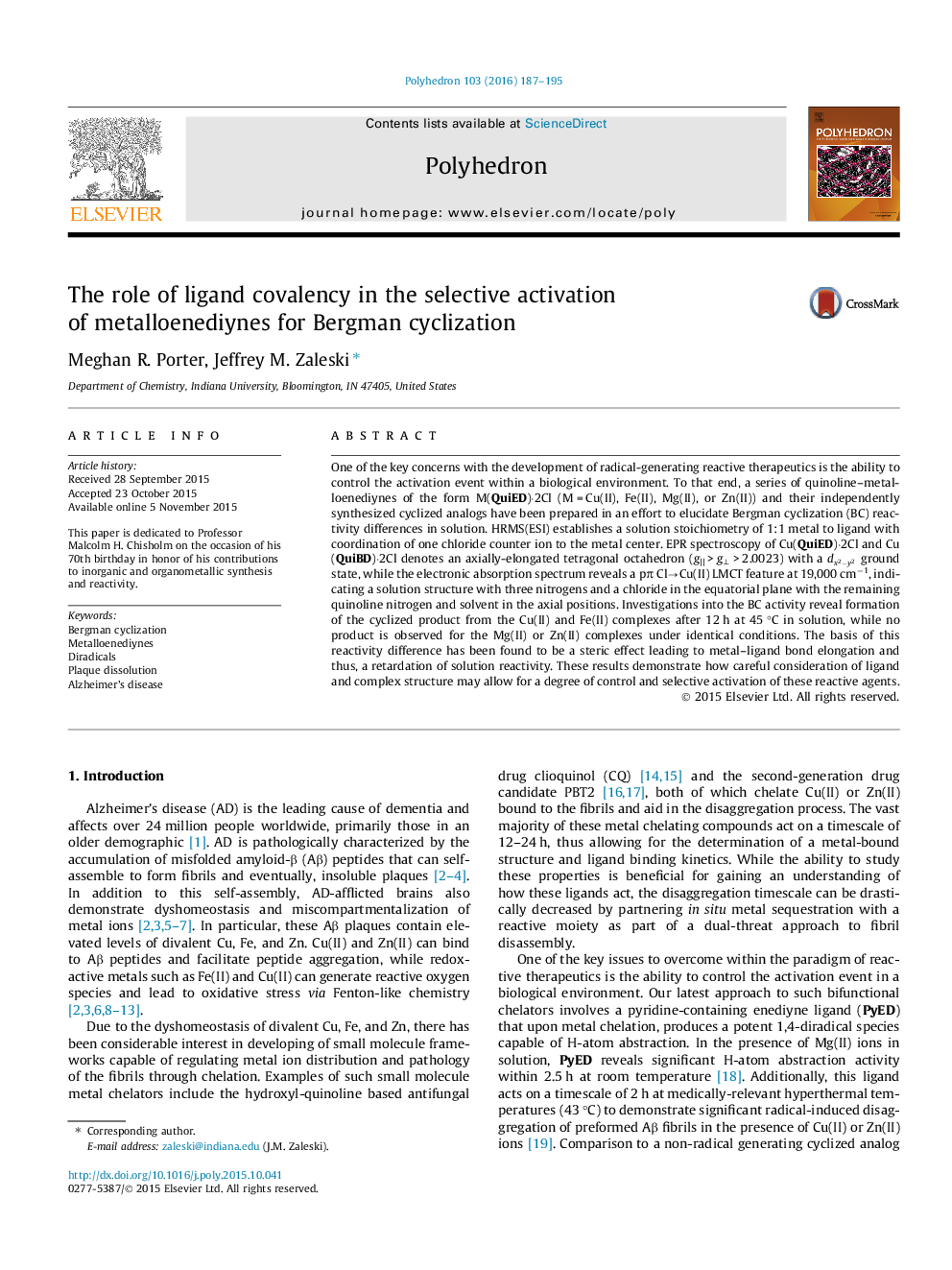| کد مقاله | کد نشریه | سال انتشار | مقاله انگلیسی | نسخه تمام متن |
|---|---|---|---|---|
| 1335858 | 979556 | 2016 | 9 صفحه PDF | دانلود رایگان |

One of the key concerns with the development of radical-generating reactive therapeutics is the ability to control the activation event within a biological environment. To that end, a series of quinoline–metalloenediynes of the form M(QuiED)·2Cl (M = Cu(II), Fe(II), Mg(II), or Zn(II)) and their independently synthesized cyclized analogs have been prepared in an effort to elucidate Bergman cyclization (BC) reactivity differences in solution. HRMS(ESI) establishes a solution stoichiometry of 1:1 metal to ligand with coordination of one chloride counter ion to the metal center. EPR spectroscopy of Cu(QuiED)·2Cl and Cu(QuiBD)·2Cl denotes an axially-elongated tetragonal octahedron (g|| > g⊥ > 2.0023) with a dx2-y2dx2-y2 ground state, while the electronic absorption spectrum reveals a pπ Cl→Cu(II) LMCT feature at 19,000 cm−1, indicating a solution structure with three nitrogens and a chloride in the equatorial plane with the remaining quinoline nitrogen and solvent in the axial positions. Investigations into the BC activity reveal formation of the cyclized product from the Cu(II) and Fe(II) complexes after 12 h at 45 °C in solution, while no product is observed for the Mg(II) or Zn(II) complexes under identical conditions. The basis of this reactivity difference has been found to be a steric effect leading to metal–ligand bond elongation and thus, a retardation of solution reactivity. These results demonstrate how careful consideration of ligand and complex structure may allow for a degree of control and selective activation of these reactive agents.
A series of metalloenediynes containing Fe(II), Cu(II), Zn(II), or Mg(II) have been prepared which demonstrate differing solution Bergman cyclization relativities. EPR and UV–Vis spectroscopic investigations reveal an interesting binding mode of the tetradentate ligand. Our results demonstrate how complex structure may allow for selective activation of these reactive agents.Figure optionsDownload as PowerPoint slide
Journal: Polyhedron - Volume 103, Part A, 8 January 2016, Pages 187–195